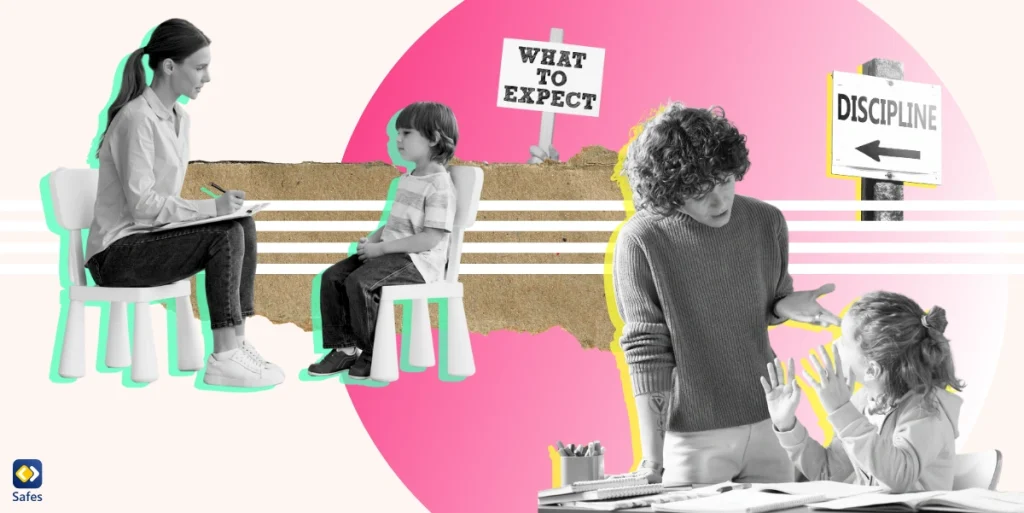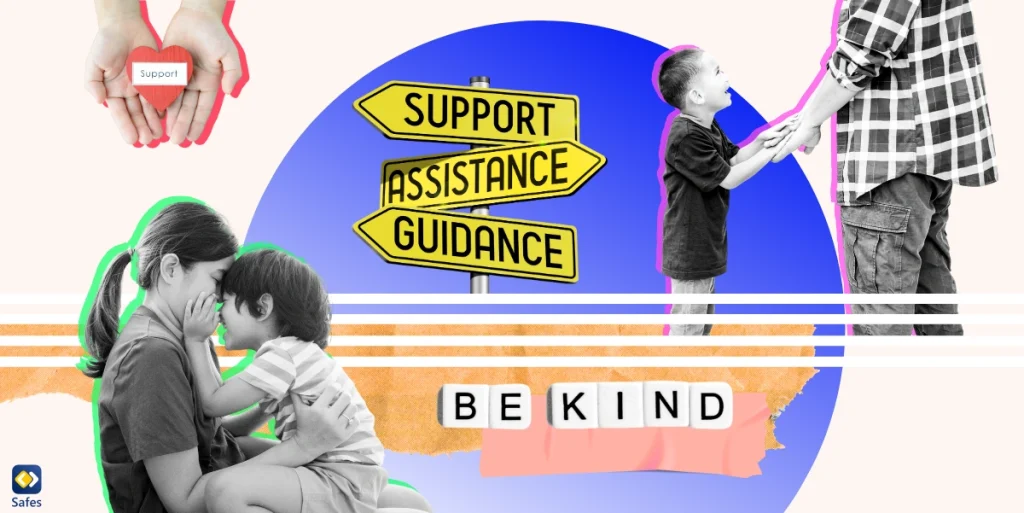When was the last time you found yourself mindlessly scrolling through social media or impulsively buying things online? If that happens often, you’re not alone. Poor impulse control is a common struggle in today’s digital world, not just for adults but for children as well. Impulse control is the ability to resist immediate temptations and make decisions based on long-term goals.
Download and Start Your Free Trial of the Safes Parental Control App
In children, poor impulse control can lead to behavioral problems and difficulties in social situations. Addressing this issue is crucial for healthy development, especially in our tech-driven society where excessive screen time can exacerbate poor impulse control. In this blog post, we’ll explore the connection between poor impulse control in children and excessive screen time and provide tips on how to tackle this issue.
Understanding Poor Impulse Control
As we explained earlier, poor impulse control is difficulty resisting the urge to act on impulses. These impulses could be harmful or inappropriate. This condition can manifest through a range of impulse control disorder symptoms in children, such as:
- Difficulty paying attention
- Acting without thinking
- Being easily distracted
What causes poor impulse control in children? There are many factors at play, everything from genetics to environmental factors like a lack of structure or discipline at home, exposure to violence, and poor nutrition.
Let’s not forget that impulse control is a crucial part of kids’ development. It’s something that kids need to navigate the world around them and make good decisions. Without proper impulse control, kids can struggle with things like self-regulation and emotional management. It can affect a child’s behavior and cause issues like impulsivity, aggression, and poor social skills.

The Role of Screen Time in Poor Impulse Control
So, you know how kids these days are glued to their screens? Well, turns out that excessive screen time can seriously mess with their impulse control. Basically, when kids spend too much time in front of screens, they don’t get enough practice regulating their own behavior. They get all hyped up by the fast-moving images and flashy lights, and before you know it, they’re acting out without even thinking. It’s like their brains forget how to say “no” to their impulses.
And it’s not just the amount of screen time that matters. It’s also the type of content they’re consuming. Stuff like violent video games and social media drama can really amp up their emotions and make it even harder for them to stay in control. Plus, when kids spend all their time in front of screens, they’re not getting enough exercise or social interaction, which can also mess with their impulse control.
So, bottom line: screens aren’t all bad, but too much of a good thing can definitely lead to some not-so-good behavior.
Strategies to Improve Impulse Control
Are you struggling with a little one who just can’t seem to resist their impulses? You don’t need to fear because we have practical tips for you on how to control impulsive behavior in your kid.
Try setting clear and consistent rules for your child to follow: Establish consequences for breaking the rules and rewarding good behavior. It may take some time for your child to adjust, but with some patience and consistency, they’ll start to understand the importance of self-control.
Provide structure and routine in your child’s life: Set regular meal times, bedtimes, and designated times for homework or play. By developing a routine, your child will learn to anticipate what’s coming next and feel more in control of their environment.
Find alternative activities to screen time: Why not try something that promotes self-regulation and decision-making? Like playing board games, doing puzzles, or physical activities like sports or dance. These types of activities require focus, patience, and strategy – all of which can help your child develop better impulse control.
Set screen time limits and stick to them: Set a specific amount of time your child can spend on screens each day and enforce it consistently. By limiting screen time, you’ll give your child the opportunity to engage in other activities that promote better impulse control and emotional management.

How Can Safes Help Tackle Poor Impulse Control in Children?
The Safes parental control app is the tool you need if you’re worried about your child’s screen time and how it might be affecting their self-regulation and impulse control. With Safes, you can monitor and control your child’s screen time, allowing them to develop better impulse control and decision-making skills. Set clear and consistent rules, establish routines, and provide alternative activities that promote self-regulation.
With Safes, you can limit screen time and help your child develop important life skills that will serve them well into adulthood. The good news is that Safes is available on all phones, tablets, and computers powered by Android, iOS, Windows, and Mac. So, your child is covered everywhere. Wish to learn more about Safes? Then, follow the links below:
- Windows parental controls
- Macbook parental controls
- Parental controls on Android
- iPhone parental controls
Take control of your child’s digital habits with Safes—start with our free trial today, no credit card required!
Additional Support for Parents
There are plenty of resources out there that provide comprehensive scientific information about kids’ lack of impulse control. For instance, check out “The Impulsive, Disorganized Child” by James W. Forgan and Mary Anne Richey or “Taking Charge of ADHD” by Russell A. Barkley. These books offer practical tips and strategies for parents dealing with impulse control issues.
If you’re looking for apps that can help your kid control impulses, you might like “Impulse Control.” It offers daily challenges and exercises to help children (and adults!) build better impulse control skills.
Of course, if you feel like your child’s impulse control issues are more serious, don’t hesitate to seek professional help. Talk to a pediatrician or licensed therapist who specializes in working with children. They can help you develop a plan of action and connect you with additional resources.
Last but not least, don’t forget the power of open communication and collaboration with your child’s teachers and counselors. They can provide valuable insight into your kid’s behavior.

Manage Poor Impulse Control in Children: Conclusion
To put it shortly once again, poor impulse control affects many children and adults today. But there are solutions out there, from parental control apps like Safes to books, apps, and professional help. Keep an open line of communication with your child’s teachers and counselors, and work together as a team to tackle this issue. With a little bit of effort and the right tools, you can help your child overcome poor impulse control and lead a happy and healthy life.
Your Child’s Online Safety Starts Here
Every parent today needs a solution to manage screen time and keep their child safe online.
Without the right tools, digital risks and excessive screen time can impact children's well-being. Safes helps parents set healthy boundaries, monitor activity, and protect kids from online dangers—all with an easy-to-use app.
Take control of your child’s digital world. Learn more about Safes or download the app to start your free trial today!




